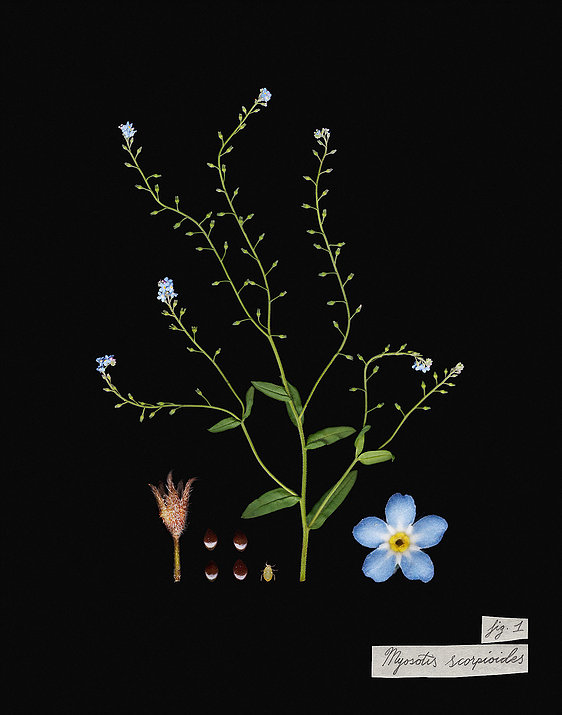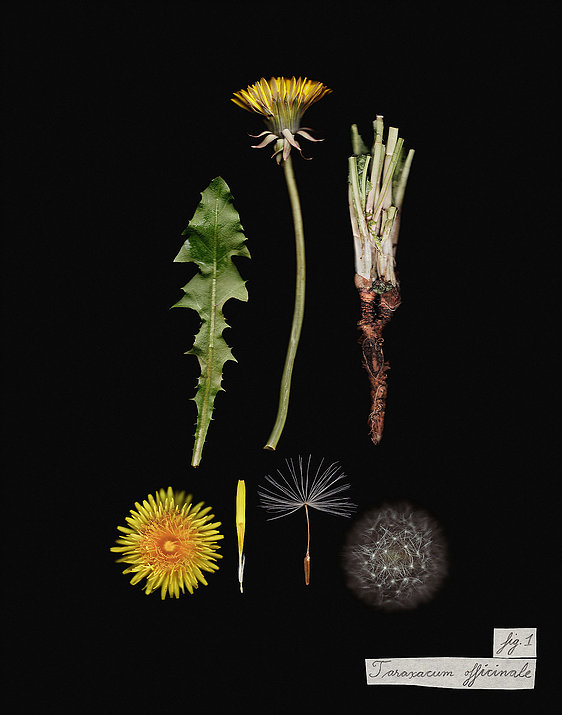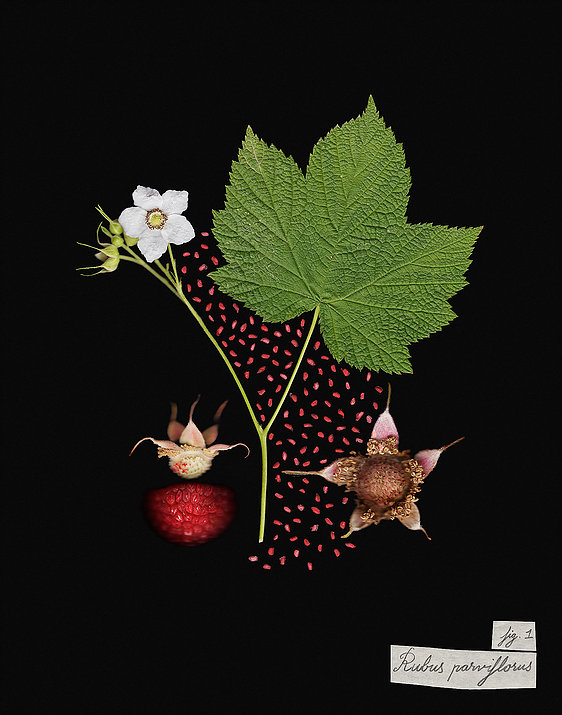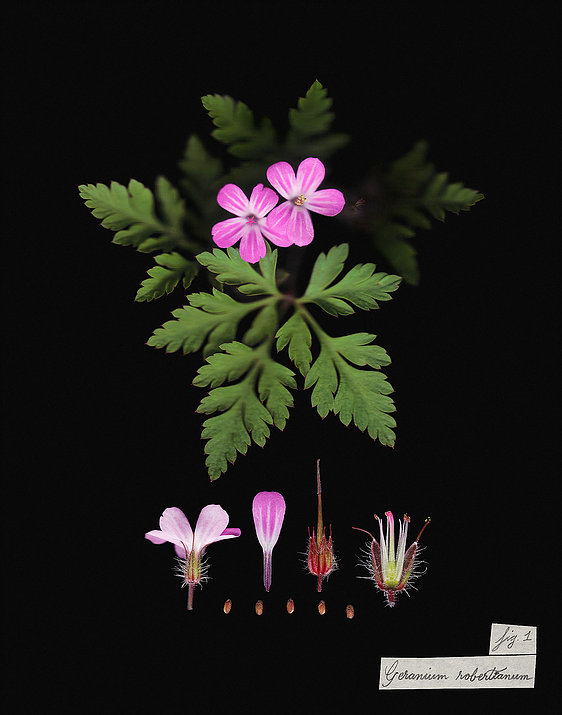Studio Visit with Laara Cerman
Q + A with LAARA CERMAN
Studio Visit: November 8th, 2016
Plants, plants, beautiful plants! Sigh. I first discovered Laara's work via instagram and immediately fell in love. Her work sits in the wonderful intersection of art, science and history. I love her focus on plants of the Pacific Northwest (an interest of mine!) and her meticulous observations and technical savvy when it comes to creating the pieces. Showing us the components and different stages of the plant, we get a glimpse into the poetic life of plants, little insights into what is essentially all around us, but may not slow down enough to see. So, without further ado, please meet Laara Cerman!
(Studio photographs by Sarah Clement, artwork with black background are from artist's website).
Introduce yourself. How would you describe yourself as a maker/creative? How do you spend your days?
Hi! I’m Laara, I’m an artist, freelance photographer and Photoshop guru. I live in the suburbs and split my time working from home or working at my office in Crosstown, Vancouver. I earn a living as a freelance retoucher and commercial photographer through my company Cake Imagery that I started with Kevin Lanthier in 2010.
I’ll go through weeks where I might only work on commercial jobs with minimal, if any, time spent on my art. I’ll also have weeks where I’m very intensely focused only on my art practice and not my commercial work. I try really hard to spend at least a bit of time everyday working on my art, even if that only means posting on instagram or looking through images I’m currently working on and taking notes on what needs to be done to finish them.
On a typical day I will first check my email to see what needs to be tended to and work on any client based commercial work first. After that, I’ll switch over to retouching my botanical images; if it’s a sunny day and plants are in bloom I’ll go on a bike ride or go for a walk to try find one or two plants to scan. I do all my scanning at home; at my Vancouver office I’ll retouch and print my botanical work, and do the bulk of my commercial work from there as well.
Briefly describe your journey. Were there some pivotal things that helped propel you to where you are now? (Perhaps there were some struggles that you see, in hindsight, helped you get to where you are now?)
I studied photography at Langara College which was more commercially oriented. I was lucky and got a full time job right out of school in 2007 where I worked for photographer Anthony Redpath as an in-house retoucher and digital tech for a few years. I became quite competent in Photoshop in a short amount of time. It was kind of a sink or swim situation and I guess I swam!
The digital process is a really huge part of my art and I wouldn’t have the technical skills to do that if I hadn’t worked those intense few years as an in-house retoucher, nor would I have the skills to start my own retouching company.
We both seem to have an affinity for plants, and more specifically, the plants of the Pacific Northwest. When did this fascination begin for you?
I can trace the start of my interest in wild plants to when I was 16 or 17 where I heard an interviewee in the documentary “The Corporation” mention how children could identify a vast amount of logos but could barely name 10 local trees. I didn’t do anything with that thought for for close to a decade.
In 2012 I bought the book “Plants of Coastal British Columbia” (an excellent field guide) and started making more of an effort to identify plants I’d come across. Around this time I was also experimenting with scanning people using a flatbed scanner; for a different project I was photographing plants with a regular camera and would use these photos to build geometric designs in Photoshop. I wasn’t happy with the way the plant photos were looking, or with how much work it was to set up and take down a mini-studio each time I had a plant I wanted to photograph, so I decided to scan what I foraged as a record for identifying later.
Since the later part of 2015 I’ve been documenting different wild plants at various stages of their life cycle as well as dissecting them and turning these scans into botanical art; it has been an amazing way to learn about what grows around me as well as learning about the uses and culture surround these wild plants that so many people overlook and mow down. I’m also working on a series where I create designs based on the golden ratio using foraged, common plants.
I’ve really enjoyed learning about the culture of different First Nations through plants; there’s just so much I don’t know and it’s really disconcerting how little I know about the people that have always lived in the Pacific Northwest, especially considering I was born and raised in British Columbia.
I would love to know more about how you create your images. In order to capture a plant in it's different stages, this must take a fair bit of time and patience. I'm curious, what has this slowing down to 'plant time' taught you?
To create my images I’ll start by taking a few clippings of a plant that I want to learn more about. I’ll scan it immediately after picking it since most tend to wilt fairly quickly. I’ll either put the plant directly on the glass of the scanner, press it gently with black paper and scan a few variations. If the plant is large then I will tape or pin it to foamcore and place the scanner face down, capturing it in multiple sections that I later blend together in Photoshop. A majority of my time is spent in post-production.
Once I’m happy with an overview of the plant I'll switch to scanning it's details at a higher resolution. I’ll also dissect different pieces and scan those; it’s quite delicate work as the small parts of the plant can get squished really easily and then be ruined.
I try to collect the different stages of the plant from the same area just to make sure it’s the same species. I'll check back every week or so until it seems like I've gathered the complete lifecycle. Most of the time I have no idea what the plant is when I first pick it and have to identify it after scanning; it's always a surprise to see how different plants transform over the weeks. It’s fascinating to see the different ways plants go to seed, from feathery seed fluff to mutant-like seed pods to ones that burst open when you touch them!
There are plants that have always grown in the places I've frequented but never noticed them until this year! This makes me wonder what else I might be blind to. What I used to see as a sea of green is now filled with so much diversity of plants, animals, and food.
"Plant time" is teaching me to look closely, to look thoroughly and to not be afraid of bugs!
Do you have any rituals or a routine that helps ground you & primes your creative mind?
The one routine I’m religious about is breakfast. I always have 2 eggs, toast, fruit, and a mocha where I count out how many dark chocolate chunks I put in. I don’t really have any rituals; sometimes I’ll clean up my work space more thoroughly than usual before I start scanning but then it ends up even messier a few minutes later!
Fear and uncertainty seem to be an innate part of the creative process. How do you confront your fears, instead of letting them stop you?
I’ll let myself feel afraid without trying to stop it, but only for a short time. In my mind, the worst that could happen is that I’ll die, and that’s going to happen eventually anyways so I might as well do the thing that scares me! In most situations I realize the worst outcome probably won’t result in my death, so then I don’t really see the point in being afraid. Both my fear and fascination with death influence my work.
I’ll also try to take things one step at a time when I’m feeling overwhelmed. I’ll do the most urgent or smallest, simplest task and not think about what else needs to be done; when that’s complete I’ll move on to the next problem; eventually the thing that was causing me anxiety has been overcome! I think this is a great attitude for learning new things too. There are so many plants in British Columbia, I’ll never be able to identify all of them, but I can start with 1 or 2 in my front yard, and from there move on to another down the street, and so on and so on. It's like hiking up a mountain: you don't keep your eyes on the peak as you're hiking, you focus on what's immediately around you, on what is right in front of your feet; eventually you'll find yourself at the top.
What kinds of activities/interests do you have outside of your actual art practice, that you feel informs or inspires your work? (or maybe just contributes to a richer life)
Knitting. I really enjoy knitting sweaters, it’s a great way to learn and practice patience and it's also quite meditative. It’s actually a really simple craft to do, once you learn the basics, but there are always little tricks you can learn to make your knits better and there’s different ways of doing something for the same or similar result. It'll take a lifetime to master.
I would love to get into dyeing yarn with natural materials; I’ve learned that mushrooms create really beautiful and vibrant dyes! I also make wine with foraged fruit and so far have made wine with blackberries, apples, and dandelions; I also volunteer at UBC’s Herbarium once a week.
I’m a sucker for good quotes. Do you have a favourite you’d like to share?
“There is a vitality, a life force, an energy, a quickening that is translated through you into action, and because there is only one of you in all of time, this expression is unique. And if you block it, it will never exist through any other medium and it will be lost. The world will not have it. It is not your business to determine how good it is nor how valuable nor how it compares with other expressions. It is your business to keep it yours clearly and directly, to keep the channel open. You do not even have to believe in yourself or your work. You have to keep yourself open and aware to the urges that motivate you. Keep the channel open. ... No artist is pleased. [There is] no satisfaction whatever at any time. There is only a queer divine dissatisfaction, a blessed unrest that keeps us marching and makes us more alive than the others.
”















